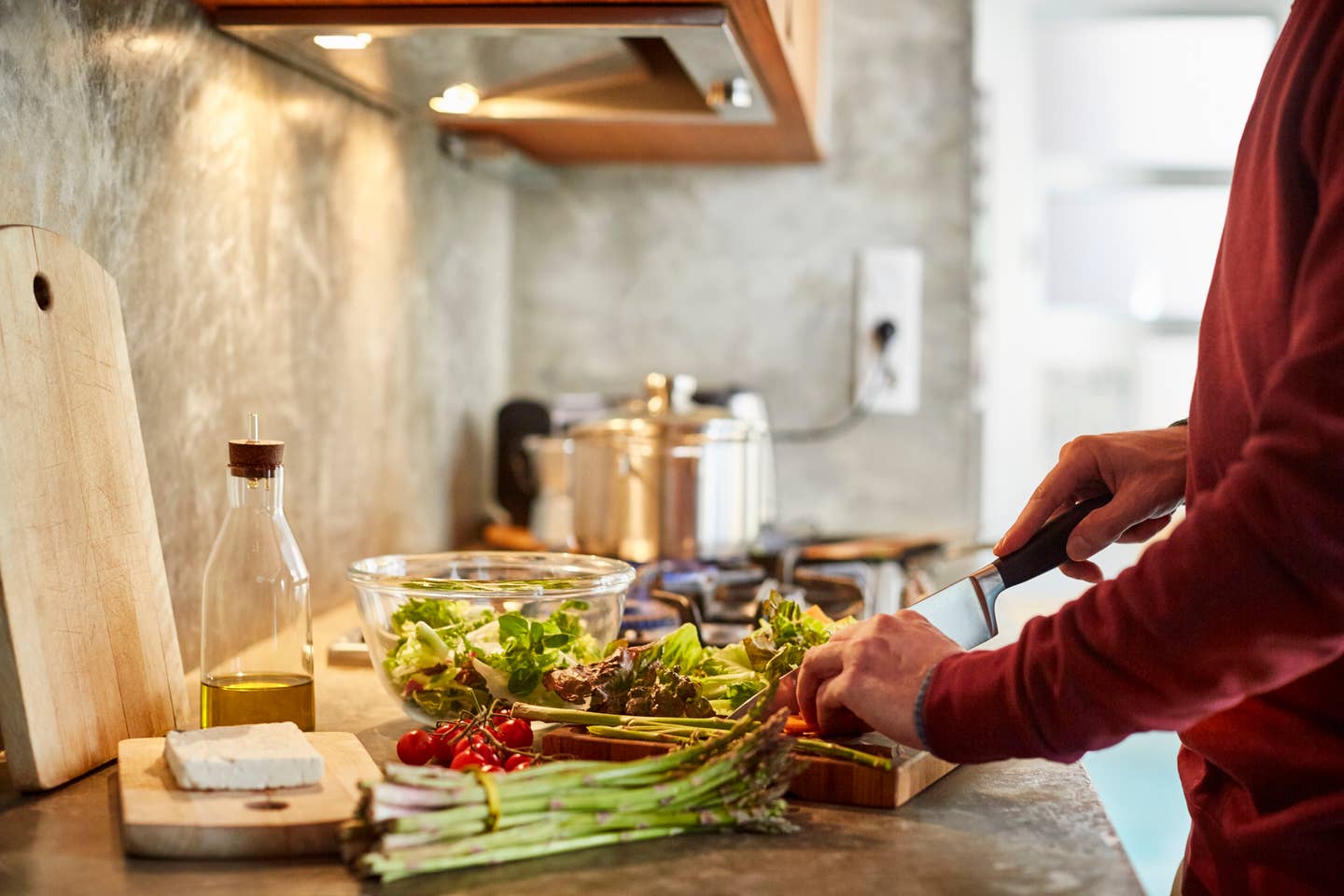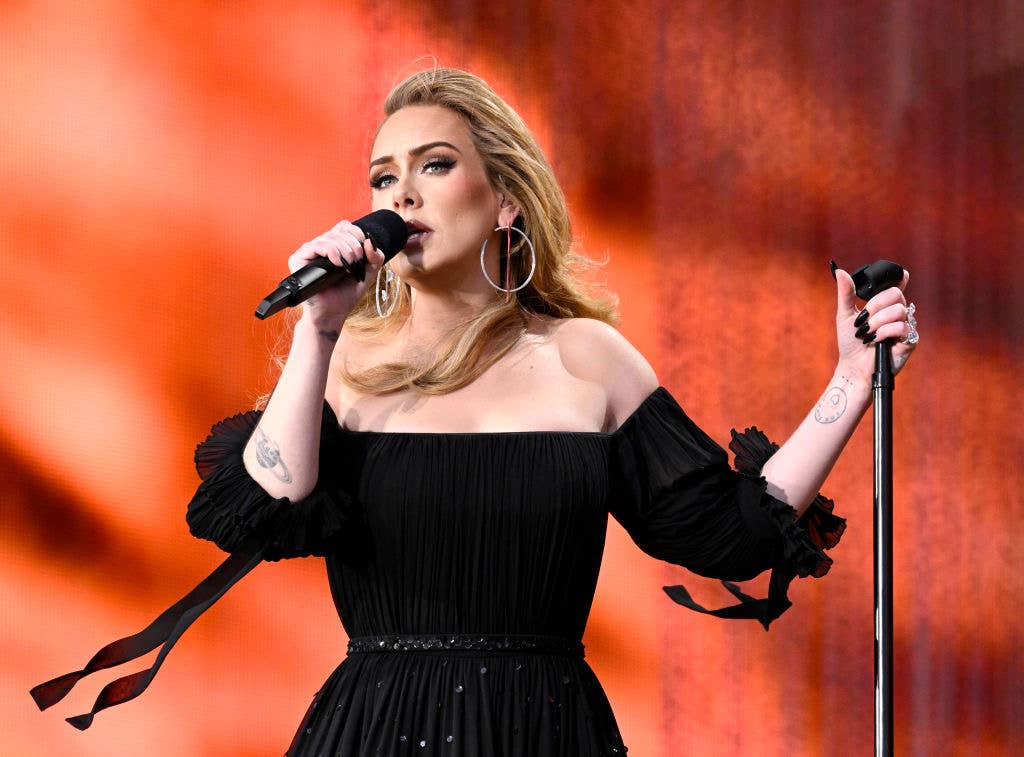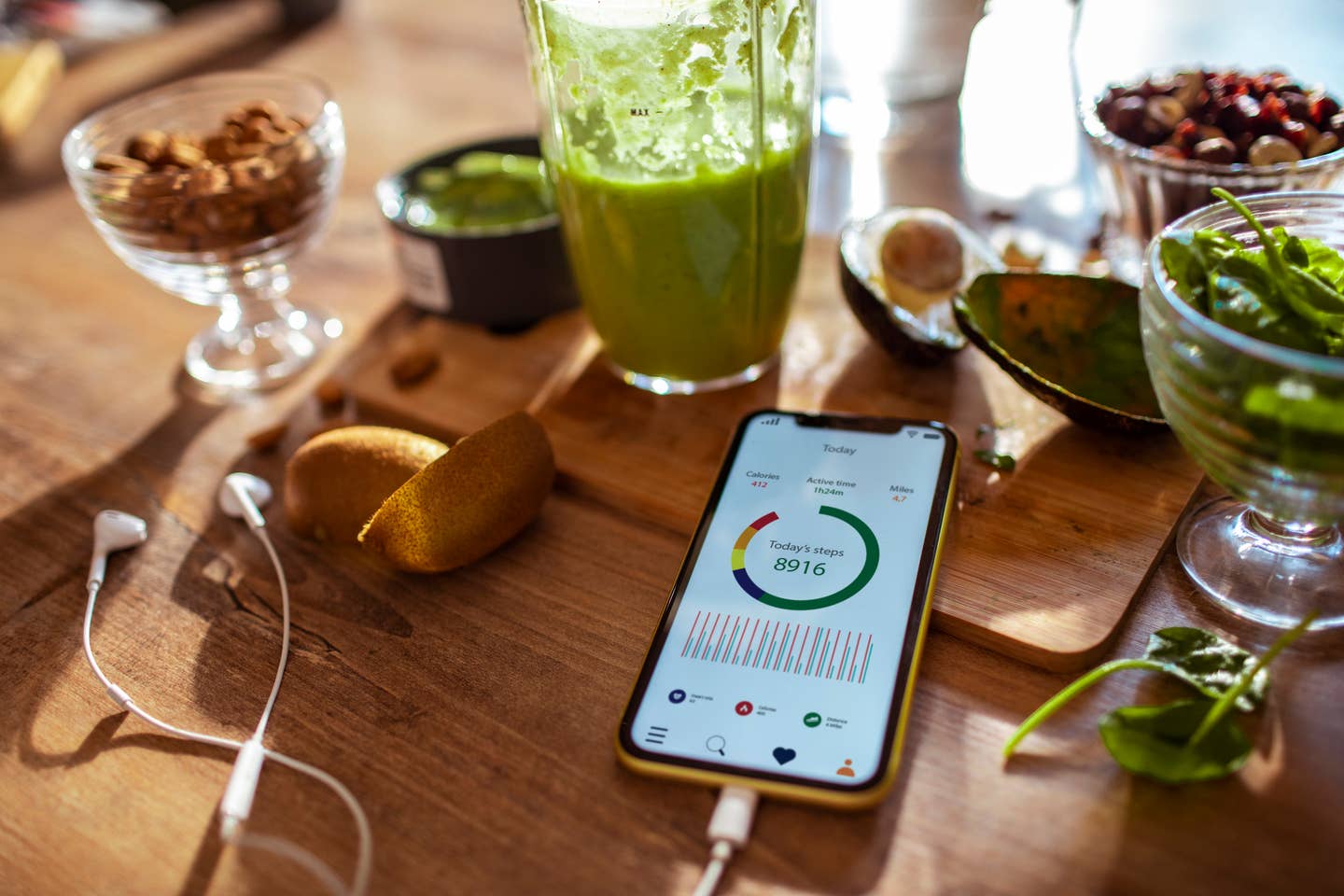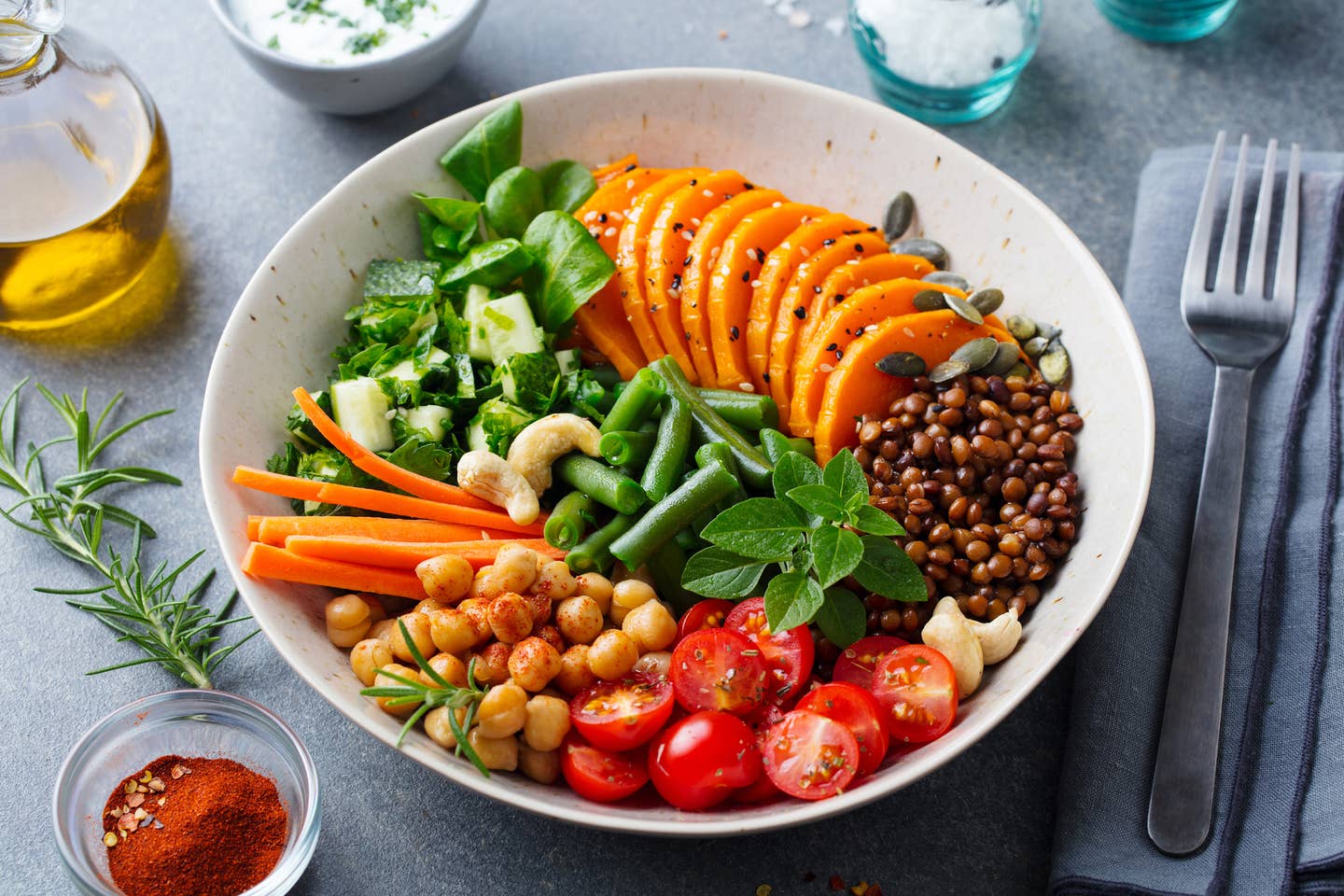
To Lose Weight and Keep it Off, This Diet Says Pick a Lane: High Carbs, Low Fat
Most people think carbs are evil, at least when it comes to trying to lose weight and keep it off. But the latest research-backed diet methodology from the authors of Mastering Diabetes, Cyrus Khambatta, Ph.D., and Robby Barbaro, MPH (which stands for Masters in Public Health), outlines how a high carb, low-fat diet works to lose weight and keep it off–and be heart healthy in the process. Essentially they tell you to pick a lane: High carbs, low fat, or the opposite (like keto) and low carbs, high fat. One leads to healthy weight loss and the other to unhealthy rebounding weight gain, markers for heart disease, and chronic inflammation.
On the Mastering Diabetes plan, foods that are considered "Green Light" foods include whole plant-based foods: Fruits, starchy and non-starchy vegetables (potatoes, squash, corn as well as cucumbers, broccoli, and more) legumes, whole grains, leafy greens, herbs and spices, and mushrooms and other vegetables are all on the table. What's not: Fat, in any substantial measurement. Red Light foods on this plan are animal products and processed foods along with oil, which is considered as processed and devoid of nutrients as table sugar.
The "Yellow Light" foods, to be eaten in small amounts: Avocados, nuts, seeds, olives, coconut, mostly because they contain healthy fat, but on this diet, the key is to eat more carbs than fat. The Mastering Diabetes Method is predicated on the idea that: "Carbohydrate-rich foods are easy to metabolize when your total fat intake is kept low," (especially saturated fat). So unless you are willing to give up most oil and fat, this isn't the diet for you.
Essentially the authors are saying: Pick a lane. Keto and Paleo diets with their high-animal-fat intake, are eventually heart unhealthy since they lead to the risk of cardiovascular disease longterm. Plus they are hard to sustain, and when you add back carbs it leads to regaining weight. The alternate lane: A plant-based diet that fills you up on high fiber foods that are higher in carbs but that are healthy foods, and that you can stay on for life and not gain back the weight, while you maintain a heart-healthy approach (devoid of animal fat).
These experts are living proof the diet works to manage diabetes and blood sugar
Khambatta and Barbaro were each diagnosed with type 1 diabetes at a young age, which sent them on a path to learn everything they could about eating healthy, and that eventually brought them to this approach of following a diet low in fat. They now teach others not just how to manage insulin needs but also how to lose weight and keep it off The two goals (manage diabetes and keep off the weight) are linked since if you can eat a whole-food plant-based diet low in oil and fat, you can lose weight and lower your insulin needs by keeping your blood sugar steady. In coaching others to adopt this low-fat, high carb diet, they have been able to show in real life that it works for anyone, not just those grappling with pre-diabetes or type 1 or type 2 diabetes or related metabolic conditions.
Their book–which has the full title, Mastering Diabetes: The Revolutionary Method to Reverse Insulin Resistance Permanently in type 1, Type 2.5, Type 2, Prediabetes and Gestational Diabetes–explains that a diet that is higher in carbs than fat and protein can work to keep insulin in check since fat essentially clogs up the liver and bloodstream, sticks around too long, and makes it harder for your body to metabolize carbs when you do eat them.
Fat is the enemy in this scenario because excess fat prevents insulin from doing its job
High-fat diets are terrible for you long term, the authors argue, but they also don't work, other than at the very beginning, since eventually you are bound to add back in carbs to your diet. Conversely, on the Mastering Diabetes plan, your body will learn to burn high-density carbs (fruit and vegetables) and stay fuller longer and prevent spikes in blood sugar or insulin.
The way they see it, the keto dieters have it wrong. While it's true that keto diets work to help the dieter lose a lot of weight initially, it also sets the person up for failure in the long-term: "You can lose weight on a high-fat diet, but eventually all that fat clogs your liver and bloodstream with fatty lipids and adds so many fatty acids to your system that once you do start to bring carbs back in, your body can't metabolize them, and you end up gaining more weight than if you had never dieted at all," Khambatta explains. He uses the metaphor of an overstuffed garage: Once it's too full (in this case because you are full of fatty foods), you can't fit another thing in (even if it's a healthy carb or lean protein) and suddenly the garage door stops working and won't shut properly. In this metaphor, the garage door is insulin and when that goes on the fritz, you are heading toward diabetes. The key is to not let the garage get stuffed with fat.
As unscientific as that image is, it helps us to understand the role of insulin, which is able to respond to any food you add to your body: fat, protein, or carbs. If insulin stops working to organize the nutrients into their needed places in the body, the whole system begins to fail.
On this diet, you eat 70 percent carbs and the rest is fat and protein
Any "low-fat, high-carb" approach to weight control is heretical to keto and paleo dieters and innovative to those of us who love carbs, even they must be eaten in the form of vegetables, fruit, and whole grains. But before you shake your head and think: That can't be right! Carbs are the enemy! Hear these experts out. The key, they say, is that you have to eat less fat (a lot less) than carbs in your diet. The perfect ratio is 70 percent carbs, 15 percent fat, and 15 percent protein. Here is the way they explain it, and since they are the experts, it's best if they debunk the myths about fat and keto, paleo, and all nature of low-carb, high-protein-and -fat diets. It all starts with insulin and how your body responds to the food that you eat.
The Beet: I always thought insulin responded to the carbs you eat, buy sweeping extra calories into storage in the form of fat. Is that not true?
Dr. K: Many people don't understand insulin. They say it's a "bad" hormone or a fat-storage hormone or that it makes you fat. People think insulin makes you store fat, so if you can drive insulin levels down, you’ll be thinner and healthier. Insulin is not bad. It’s necessary. The absence of it is incompatible with life. If you can't generate insulin, you die.
"The goal is not to go from secreting a large amount to as little as possible but to maintain a normal amount of insulin that helps your cells get the nutrients that they need to function properly. That being said, insulin is manufactured by the beta cells in your pancreas in response to glucose in your blood. But it’s also stimulated by protein and fat and carbohydrate, the difference is that eating carbs elicit the largest response. By that rationale, it's easy to believe that if you eat fewer carbs than you do fat and protein, you'll create less insulin. But fat actually sticks around longer, which means your cells can't take in carbs on top of fat.
"Think of it this way: Insulin comes to the door and says: 'Hey muscles and liver, do you want this fuel?' And if they need fuel (you just worked out, or you haven't eaten in a while) they say, 'Sure thanks, I can use that.' Or if the cells are full already they may instead say, 'We are not listening to you now. Go away.' At which point insulin has to shunt the extra fuel off to be stored. This is obviously a simplification, but Ideally, what you want to happen is, if insulin knocks on the door, both the muscles and the liver say 'Yes, I need that.' This happens when they are not too busy or overwhelmed by having eaten fat. So when carbs in the form of glucose enter the tissue it's either burned for energy or stored as glycogen.
"But again, insulin also promotes amino acid uptake and fatty acid uptake from the blood. So it also says, 'I'm sensing amino acids (from protein), want that?' Or it says, "Here are fatty acids, want that?' So the cells can basically choose what they want to pick up. Aminos don't get stored. They end up being converted into rebuilding tissue in a complex process. But fatty acids can either get burned or stored for energy. Either they get burned immediately or they get stored for later. There's no big difference between the way your cells burn fat or carbs. They can use both, but the more they burn fat the less they burn glucose, so it's one or the other, essentially.
The Beet: Is this why, after going keto, when you add carbs you regain the weight?
Dr. K: The low-carb world likes to say that insulin promotes fat storage, which is true, but it's not the main reason insulin exists. There is an interplay between glucose and fatty acid. So when you're eating a low-carb diet high in fat and protein, the insulin goes down, but the problem is that when you do that the reliance on fatty acids for fuel–in blood and muscle–there is a direct negative effect. The more fatty acids get into tissues the less they can burn glucose.
"When you eat a diet high in fat–such as keto or paleo–during the short term you are lowering insulin, but it makes you glucose intolerant. And it makes you insulin insensitive. So if you are trying to get carbs and glucose out of the blood and then you go and eat a banana (which has carbs) it can't get into your muscles, and cells, as readily because the fat is blocking those glucose cells.
The Beet: So fat clogs up the cells and leads to long term chronic diseases as well?
Dr. K: "High-fat diets increase insulin resistance. And when insulin is less effective, that is the central condition for chronic disease, like chronic kidney disease, chronic liver disease, more you become susceptible to dementia and it also increases your risk for atherosclerosis and cardiovascular disease, as well as high blood pressure. And it also makes you more susceptible to diabetes.
"You can see an increased risk for markers in the blood that are associated with heart disease in as little as three to four weeks because LDL concentrations go up quickly. But it can take years for heart disease to happen. You can see the warning signs on a high-fat diet, whether later heart disease actually manifests, we don't know yet. But the weight loss you get from keto in the short term is potentially irrelevant in the long term.
The Beet: So keto weight loss doesn't equal healthy long-term weight loss.
Dr. K. Keto is a rapid weight loss tool. You lose a tremendous amount of weight in the short term, like up to 17 pounds in the first month. So people get enticed because initially their blood sugar and A1C are lower and all their markers are lower. But five years in the future –or even less than that– you see their insulin levels go up and their kidney function is compromised. Mastering Diabetes has the same benefit but without all the unhealthy side effects. By mastering a healthy eating approach, you get the weight loss by not the insulin resistance.
"Insulin resistance affects everyone who is struggling to lose weight or experiences brain fog, low energy, ED, PCOS or pre-diabetes. Basically insulin resistance is a self-defense mechanism that cells create when there is excess fuel inside of them. So if you are eating a high-fat diet, if there is an excess amount of fatty acids in the cells, they create a way to block more fuel from coming n. Think of this as a garage with too much stuff in it, the door starts not working well, and you literally can't add more stuff. Insulin resistance is a stress signal from the liver and muscles and cells that there's too much fuel. Then the cells can literally burst. This happens in extreme cases of obesity. But long before that happens, you’re living in this inflammation state for some time, as your cells become more dysfunctional over time.
The Beet: Wow, this sounds grim. So too much fatty food and you get inflammation?
Dr. K: Right. When you eat a high-fat diet, not only can your cells not metabolize carbs over time, but the blood vessels in the organs and the brain become less malleable. The liver accumulates fat and that predisposes you to have "fatty liver." As a result of that your C-reactive protein goes up and the incidence of hypothyroid goes up. It's an increased inflammation response in the body. And this is not something you can feel. Chronic inflammation is not like a stubbed toe. You can’t feel it, but your cells in your adipose tissue (the fat cells) can burst and spill fluids into the tissue around them, and then your immune system gets involved and has to send macrophages to clean up the cell debris. This means a fatty diet is tied to being immune-compromised.
"But it's not just in people experiencing obesity. Someone who appears to be fit goes to the gym and looks great–even they can live with chronic inflammation and they don't see it because it's in blood vessels and organs, liver and even the brain, from eating a high-fat diet."
The Beet: You figured out you had diabetes at college when you were exceedingly thirsty. Why does that happen?
Dr. K; One of the telltale signs of living with diabetes is increased thirst. When the amount of glucose in your blood goes up, elevated way beyond where it's supposed to be, your brain is trying to get that glucose out of your blood. So your brain tells your body: Drink water! The idea is to dilute the glucose, so it goes down. It's a way of peeing it out. Everyone thinks the first thing to do, diet-wise is to lower your sugar intake. But the key is you have to lower your fat intake.
"Carbs are not all created equal. It depends on what type of high-carb foods you take in. If you try to eat a lot of fruits like bananas and papaya or whole grains like quinoa, etc. then you are eating healthy carbs that burn slowly and steadily. But if you eat all the fruits that are high in carbs and you add foods that are high in fat, that’s where it becomes a problem.
The Beet: So you can eat carbs, as long as you don't also eat fat or douse them in oil?
Robby Barbaro: Eating carbs is only a problem if your fat intake is higher than your carb intake. The perfect ratio is 70 percent carbs, 15 protein, and 15 fat. Instead of trying to hit that target ratio, it's so much easier if you focus on what we call Green Light foods, which are whole fruits and vegetables, whole grains, and herbs and spices. Then, if you become aware of which foods are high in fat, which are Red Light Foods, you stay away from those. Yellow Light foods are healthy fats like nuts, which you eat conservatively. Almonds are healthy but we suggest eating 5 or 6 almonds, not two handfuls. But once you learn the foods to stay away from, everything else becomes a matter of, "Eat until satisfied."
The Beet: This sounds simple. What feedback have you had from people on the plan?
RB: They are surprised by how little they need to limit the foods they are used to eating. We are telling people not to eat more than 30 grams of fat a day. And if they exceed that amount, they are going to struggle if they eat more carb foods.
The phrase, "healthy fat" means eating those fats like avocado and nuts in severe moderation. They’re healthy fat in the sense that they're better than animal fat. But really we should say healthier fat
"When you truly limit your fat intake to a severely small amount, the results are amazing. You see a large weight loss very very quickly. The people we work with have seen that the number of carbs they eat goes up five times the amount they are used to eating, while their insulin sensitivity goes down and the amount of insulin they need to take is often cut in half.
The Beet: What do you eat in a day, typically?
RB: Fresh figs and arugula for breakfast. A salad with papaya, strawberries, arugula, scallions, passion fruit, and tomatoes for lunch. Snack is wild blueberries and papaya, scallions and arugula. And dinner is Asian pears, carrots, papaya, tomatoes, romaine lettuce, garlic, bell pepper, sundried tomatoes and lemon juice. What's crazy is how satisfied you feel. You feel satisfied between meals.
Dr. K: For Breakfast: Two Plantains and about half of papaya. Lunch is a big smoothie bowl, with bananas and mango, and any other kind of fruit, plus raisins and more papaya. People stay away from fruit but it contains natural carbs, not sugar. My snack is usually something like garbanzo beans and vegetables. Dinner: Lots of vegetables, perhaps some steamed cabbage with more garbanzo beans and carrots, tomatoes, steamed cauliflower and broccoli with quinoa and onions
The Beet: This all sounds very draconian. What about a treat?
Dr. K. We say: Go for it. Do whatever you want. We used to be more dogmatic and say you have to do this all the way. But that doesn't work for people, and they need to do what they are going to anyway. A little bit of alcohol is totally fine. Usually, we recommend less than four drinks a week. If you give yourself an allowance like a treat or a drink of alcohol, you stick with it. And if you stick with it, you lower your insulin a lot… Anywhere from 10 percent at a minimum to upwards of 60 percent. Doctors send patients to us. But this works for anyone who wants to lose weight and keep it off.
More From The Beet






